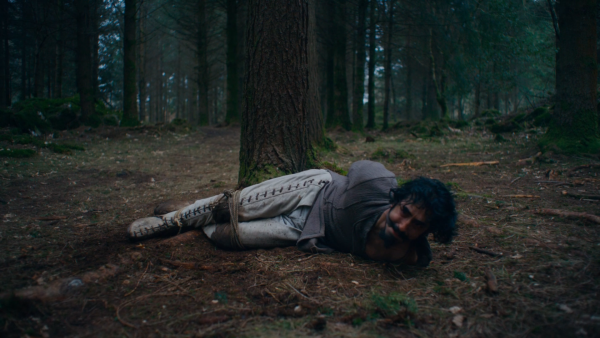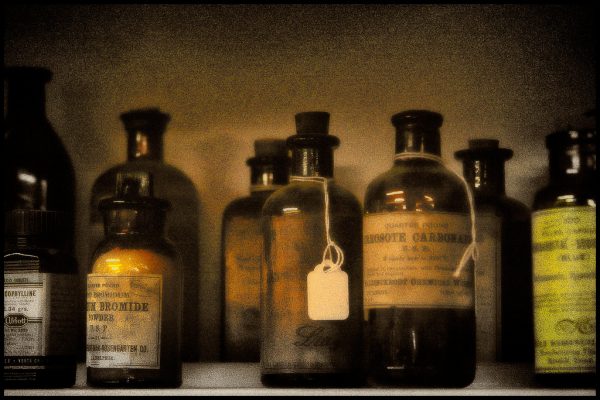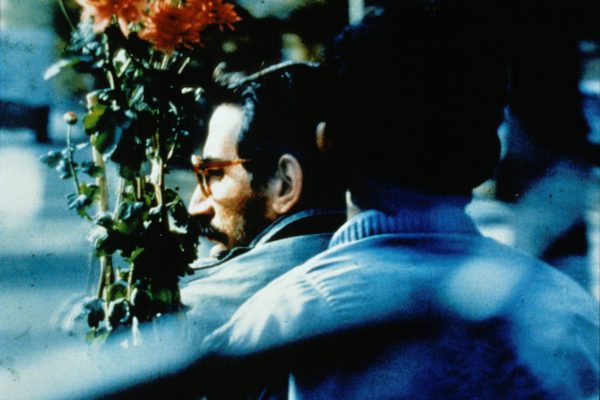Sir Gawain and the Green Knight is a tricky poem, in the literal sense that it’s full of tricks: a rug repeatedly pulled out from under you, a magician smirking and holding up a card that you cannot entirely be sure was yours. Written sometime in the late fourteenth-century by an unknown author, the poem tells the story of a ‘crystemas gomen’ (a ‘Christmas game’, in midlands-dialect Middle English) between its titular characters. The Green Knight allows Sir Gawain, King Arthur’s nephew, one blow with an axe; one year later, the Knight will return the blow. Gawain’s blow strikes off the Knight’s head, but the green figure simply picks up his head and rides away, telling Gawain to seek him out in the mysterious Green Chapel – location unknown – next Christmas. Most of the poem deals with Gawain’s journey to find the Green Knight, particularly in the long section Gawain spends at Hautdesert, a noble castle where he is hosted by the mysterious Lord and Lady Bertilak. But the poem opens with the splendour of Camelot at the height of its power and youth, before Lancelot meets Queen Guenever, before the Holy Grail, before the dark will come and swallow King Arthur’s court. The poem tells us:
such glaumande gle glorious to here
dere dyn vpon day daunsyng on nyȝtes
al watz hap vpon heȝe in hallez and chambrez
with lordez and ladies as leuest him þoȝt
The hubbub of their humour was heavenly to hear:
pleasant dialogue by day and dancing after dusk,
so the house and its hall were lit with happiness
and lords and ladies were luminous with joy.1
In the poem, Camelot burns so bright that if you can bear to turn your gaze from the merry light, you can almost see the waiting shadow it casts. But in David Lowery’s 2021 film adaptation, The Green Knight, we meet a very different court. Gone is the colour and cheer, and King Arthur and Queen Guenever are weary and sickly. The Round Table is made from austere, milky slate and sits in a dark room; a stark contrast from the sumptuous set piece of the poem, where we find Guenever
ful gay grayþed in þe myddes
dressed on þe dere des dubbed al aboute
smal sendal bisides a selure hir ouer
of tryed tolouse and tars tapites innoghe
þat were enbrawded and beten wyth þe best gemmes
gloriously framed at her place on the platform, pricelessly curtained
by silk to each side, and canopied across
with French weave and fine tapestry from the far east
studded with stones and stunning gems
Here, Gawain sits beside his aunt Guenever on her ornate platform, at home in the luxury and ceremony, but the film’s Gawain, played by Dev Patel, is a new creature. Patel’s intimate and careful portrayal stresses Gawain’s anxiety and hunger to prove himself. We first encounter him happily in bed with his lower-class lover Essel, before he leaves her to join his chivalric peers at the Round Table, face the Green Knight, and try to prove his worthiness. The silence of the Round Table falls over Gawain, and a gloominess sets over the rest of the film: blood-soaked fields, shit-scattered courtyards, dour interiors. It’s a rendition of the medieval period aligned to our modern perception – a time of decline, the great kings of the past fading into obscurity, needless bloodshed and warfare – which makes sense, because despite its medieval subject, The Green Knight is a very modern film. Maybe that’s not such a good thing.
Critics have flooded to applaud The Green Knight. ‘The film is a curious and gloriously risky effort,’ Alissa Wilkinson writes in Vox. ‘There’s no effort to modernize the story, no attempt to make it easily legible to the audience.’ But in fact, the film is all modernisation, quick to strip away the intricacy of the poem’s narrative and implying in this act that it is providing a politically progressive update. From the characters to the narrative structure itself, The Green Knight dampens or misunderstands the work its original text is doing, providing a modern adaptation that loses all the glittering complexities and intrigue of the actual medieval story.
Structure is significant here: it’s one of Sir Gawain’s greatest tricks. After Gawain has left Camelot, roughly 1300 of the poem’s 2530 lines take place within Hautdesert, the castle that Gawain stumbles across in his hunt for the Green Chapel. At Hautdesert we find Lord Bertilak and his Lady, along with their court, and it is here that Bertilak sets up another game, the famous sequence often referred to as the ‘exchange of winnings’. Gawain is weary; Bertilak suggests he rest and restore himself after his long and arduous journey, before his final frightening confrontation with the Green Knight, while Bertilak goes hunting. ‘ȝet firre […] freke a forwarde we make,’ says Bertilak. ‘quat soeuer I wynne in þe wod hit worþez to yourez / and quat chek so ȝe acheue chaunge me þerforne.’ [Here’s a wager: what I win in the woods will be yours, / and what you gain while I’m gone you will give to me.] What follows is a strange three days of parlour power-games, shifting alliances, and a Lady of the house determined to seduce Gawain. While Bertilak goes hunting, the Lady coaxes Gawain into accepting three kisses from her, which he dutifully passes on to Bertilak: ‘he hasppez his fayre hals his armez wythinne / and kysses hym as comlyly as ho couþe awyse’. In his translation, Simon Armitage says Gawain ‘hugged the lord / and kissed him in the kindliest way he could’; but I prefer a translation that acknowledges the bodily details of what Gawain is doing, clasping Bertilak’s neck in his arms and kissing him not kindly, a mood descriptor that gives the action the vibe of a friendly handshake, but comely: prettily, handsomely, transforming it into an aesthetic and even erotic moment. Gawain is constantly struggling to discern who he can trust – at times the answer seems clearly to be ‘everyone’, at others ‘no one’. When he finally leaves Hautdesert and rides to the Green Chapel to meet his viridescent doom, the Green Knight reveals that he is Bertilak, and that he and his wife had been deliberately toying with him. It’s the ultimate sleight of hand: what you think is a rest stop before Gawain goes off to fight his monster turns out to be the real monster, the real test.
Lowery’s adaptation upends this structure. The Green Knight takes eight lines of Sir Gawain and makes it the bulk of the film, re-centring the story around Gawain’s journey to the Green Chapel (and, therefore, to Hautdesert). Sometimes this works to good effect: Patel is magnificent on his miserable expedition through the wilderness, embodying the poem’s plaintive sentiment that ‘werre wrathed hym not so much þat wynter was wors’ [fighting troubled him not so much as the winter]*. During Gawain’s encounters with battlefields and bandits and even a grumpy saint, the film makes literal what the poem draws a veil over. Where the poem casually mentions ‘etaynez, þat hym anelede of þe heȝe felle’ [giants pursuing Gawain over precipitous rocky highlands]*, the film shows enormous blue figures moving through the icy mist. Yet while The Green Knight restores the grandeur of the journey to the story, it also skims over the real stakes of the poem, which are ultimately domestic ones: about the lies we tell in communities, about the implications sex has on our identities, about the way humans manipulate and control other humans. Instead, Lowery transforms a communal story into a comment on heroism and modern masculinity.
In the poem, Gawain spends most of his time surrounded by other people, negotiating his own identity and chivalry within the remit of a crowd, where everyone seems at once very friendly and very dangerous; in the film, we see him thrust up against single antagonists (the Green Knight, the Lady, a battlefield scavenger) or friends (a fox, his mother), or simply toiling alone. Despite stripping his name from the title, the film belongs to Gawain – he is given a hero’s journey, all the better for Lowery to question the underlying motives of this hero’s journey. Lowery is suspicious about the heroic masculinity that underpins a knight’s journey, a classic story that tends to uphold the epic tales of our past and reeks of patriarchal paradigms and cruelty. ‘Why greatness?’ Gawain’s lover Essel asks of his ambitions. ‘Why is goodness not enough?’ Knighthood, the film suggests, is a fair cover for foul deeds, and the ending offers Gawain a choice. At first, too afraid of the potential beheading, Gawain runs away from the Green Knight and we watch a flash-forward montage where Gawain becomes king, rejects Essel in favour of a noble wife, and eventually sees Camelot overcome by warfare and cruelty. The film cuts back to Gawain in the Green Chapel, horrified by this vision of his future; he removes a magic girdle which protects him from harm, bows his head to the Green Knight and tells him, ‘I’m ready.’ It is a criticism not so much of knighthood but modern masculinity; a coming of age tale where we see a young man learning to reject a patriarchal inheritance of cruelty and power; a chivalric romance for the #MeToo era, eager to show the harm men inflict in seizing the reins of power. The right thing to do, the film suggests, is simply bend your head to the blow, and be brave.
This is all very well, but there is a massive blind spot in this journey. By believing that we can provide a more nuanced story than the original source, we lose the nuance that was already there. The Green Knight’s obsession with modern masculinity and its pitfalls encourages viewers – from our comfortable seats in 2021 – to point out the flaws in founding cultural myths, thereby affirming our own superiority and growth. The film draws attention to the trajectory from the fourteenth-century so-called hero to twenty-first-century toxic masculinity, which is a story worth interrogating. It’s always interesting to unpick the assumptions that make a hero, and King Arthur and his knights have been attached to all kinds of violent ideology over the centuries. But The Green Knight’s revision of its medieval source material is less about exploring this trajectory from knight to modern-day patriarchy, and more about fixing the original story. Far from offering a subversive version of Sir Gawain, the film rids the poem of its subtlety, its sexiness, its fun.
This overlay of contemporary mores is particularly obvious in The Green Knight’s approach to women. Many of the film’s female characters are new: Essel, Saint Winifred and Gawain’s mother make no appearance in the original text. Queen Guenever and the Lady of Hautdesert, who do, are given expanded speeches. It’s an obvious choice for modernisation – bring more women into your medieval story, and give them more to say.
But what do they say? The Lady is a mysterious and somewhat inaccessible figure. Played by Alicia Vikander, who also plays Essel, she has the smirking delivery of a Powerful Woman™. She monologues about the power of nature, quizzes Gawain on his quest (‘You’ll do this one thing [and] return home a changed man, an honourable man?’), and, finally, delivers the magic girdle to save him from harm. Along with it, she gives him a hand-job in a studied reversal of gendered power dynamics: Gawain naked, the Lady dressed; Gawain on his back, the Lady leaning over him, both maternal and contemptuous as she tells him to ‘take it’ (the girdle, the pleasure, both). The camera lingers on Gawain’s bewildered face and the somewhat emasculating cum shot that follows, and the Lady declares, ‘You are no knight.’
This may be an erotic encounter, but compared to the poem, it is staid, underdeveloped, even conservative. Our original Lady is not inaccessible nor stern (as though that is the only way a woman can inflict damage). She is playful and charming, and when she visits Gawain in bed every morning of his stay at Hautdesert, they banter in the courteous yet boisterous mode of medieval romance. Full of good humour, she emphasises Gawain’s powerlessness: ‘now ar ȝe tan astyt bot true vus may schape / I schal bynde yow in your bedde þat be ȝe trayst’ [You’re tricked and you’re trapped! But let’s make a truce, / or I’ll besiege you in your bed]. She extolls Gawain’s well-known deeds – ‘for I wene wel iwysse sir Wowen ȝe are / þat alle þe worlde worchipez quere so ȝe’ [for I know well that you are Gawain, whom the whole world worships wherever you ride]* – in a bid to use his reputation to claim the kiss she wants. When Gawain politely declines, she questions his identity: ‘so god as gawayn gaynly is halden / and cortaysye is closed so clene in hymseluen/couth not lyȝtly haf lenged so long wyth a lady / bot he had craued a cosse’ [A good man like Gawain, so greatly regarded, / the embodiment of courtliness to the bones of his being, / could never have lingered so long with a lady / without craving a kiss]. Eventually, Gawain has no choice but to give in.
It’s a sly show of women’s power within medieval courts as arbiters of chivalry. If knights must do good for noble ladies, it falls to noble ladies to decide who (or what) is doing good. The Lady playfully rebukes Gawain with ‘ye are not Gawain’, because the famous Gawain would kiss her, Gawain would court her, Gawain would, essentially, do what he was told. The consequences are real and dangerous, as Gawain’s identity bends and fractures to make room for her demands. While the Lady of the poem is friendly and charming, there is something cruel about the way she manipulates Gawain into becoming the knight she wants him to be; a cruelty even more apparent when, in the poem’s final section, the Green Knight reveals his true identity. Rather than Vikander’s stern powerhouse subduing Gawain in an unimaginative display of sexual power, the Lady of the poem is more vicious, more creative in the way she flexes and plays with him. Her goal is not Gawain’s momentary embarrassment, but rather the gentle dissolution and control of his entire identity.
Similarly, the queerness of the poem is oddly defanged in the film. Gawain kissed Bertilak comely, as we have seen; one of three kisses, which the Lady flirts and bullies out of him and which count as Gawain’s ‘winnings’ for the day, meaning that he must then ‘exchange’ it by kissing Bertilak in the evening. Kisses between men were common in medieval texts, and this relationship would not be so notable except for the unwritten suggestion which hovers over the poem: if Gawain did have sex with the Lady, as she clearly wanted, by the laws of the game he would be obliged to have sex with Bertilak as well. It’s a suggestion that has thrilled and tantalised queer medievalists for decades. In her 1997 essay ‘Getting Medieval: Pulp Fiction, Gawain, Foucault’, Carolyn Dinshaw explains that ‘homosexual sex is thus one hypothetical fulfillment [of the game]… but is a forbidden end. Or rather, not forbidden, but unintelligible within the heterosexual world of this poem’. In other words, it was a possibility too subversive for its medieval author to acknowledge, but the idea of it still hangs over the text, adding to the poem’s troubling and riveting sense of queerness.
The Green Knight, however, replaces the kisses with a puzzling skip of logic. From the Lady, Gawain receives a hand-job; to Bertilak, he gives a kiss that he never received. Imagine me flashing up my furious red card: it doesn’t follow the rules of the game! Determined to vamp up the Lady and too cowardly to follow the logical through point of its own invented sex scene, The Green Knight breaks the rules so smoothly that it’s easy to miss.
This is what we lose when we decide that a medieval text does not do a good enough job of interrogating its own themes. Gone is the queerness, gone is the worrying communality of Hautdesert, gone is the mutability of Gawain’s identity, gone is the Lady’s power to change Gawain into who she wants him to be. Instead we are left with a halfhearted thought about the importance of bravery as Gawain bends his neck to the Green Knight’s axe. It is no wonder that The Green Knight’s Camelot is empty and austere – it supposes a world in which single men are important and you can always pick out the significant shadow thrown against the wall. There is no room in it for Sir Gawain, with its rooms teeming with people and its walls hung with tapestries, an ambiguous text brimming with brightness and edged with shadow. Though the film reaches after some of Sir Gawain’s ideas – the dangerous Lady, the ambiguity of chivalry – it does so with a ponderous sense of its own immaculate moral vision. It is so afraid to make the wrong statement that it loses the potential and discomfort of a story which is in no hurry to make any definitive statement at all.
Why do we want to fix older texts? Where does this urge come from? Why are we so desperate to dig our fingers into a source and haul it into the twenty-first century, where we are certain we can improve it? Sometimes barely any time has passed; see the 2021 Gossip Girl reboot, released less than 10 years after the original show ended, where characters agonise over their own privilege with the kind of earnest browbeating that would have had deeply problematic ‘Queen B’ of the Upper East Side Blair Waldorf gagging, or the Disney live-action remakes of their own 90s oeuvre, where princesses are frequently given a new determinedly feminist song (‘I won’t be silenced, you can’t keep me quiet,’ Jasmine carols in the 2019 Aladdin). Nor is Sir Gawain the only medieval text to fall under the scalpel: Maria Dahvana Headley’s The Mere Wife (2018) recast Beowulf as an American suburban drama with its titular hero a corrupt cop. Sometimes a retelling can create genuine nuance, a new story that questions or complicates its original without condemning it wholesale, like Madeline Miller’s Circe (2018, which plays with The Odyssey) or Jean Rhys’s Wide Sargasso Sea (1966, riffing on Jane Eyre); sometimes it is great fun, like Clueless (1995’s teen comedy version of Emma) or 10 Things I Hate About You (1999’s take on The Taming of the Shrew). But there is something deeply unappetising about the instinct not just to retell an old story, but rescue it from its own perceived flaws.
Part of this instinct might lie in the current fear of ‘cancel culture’, where the distinction between a text that includes or interrogates troubling ideas and a troubling text seems to be blurring. Rather than preserving the ambiguous complexities of the past and risking the contaminating seep of creation into creator, we want to present a text so upright and stalwart in its morality, or so obvious in its condemnations, that we cannot be questioned.
But it is also a deeply comforting narrative to believe that we now know everything we need to know, that human morality has reached its apex. The past was misogynistic! It was racist! It was homophobic! As though we have left misogyny, racism and homophobia behind us. As though the world moves along a teleological curve and no time was ever better than this exact time, when we know the most we have ever known and are most accurate in our judgments of our fictions and ourselves. Perhaps it’s the concept of better that is the problem, as though we can slice through the fabric of centuries and cultures and genders and classes to compare two years, say 1392 and 2021, and determine which was the most morally upstanding.
It’s nice to feel safe. It’s nice to feel right. It’s not nice to feel like Sir Gawain in his original poem, tested at every corner, with no clear answer, no clear enemy, no clear ally, not even himself. Unlike the flash-forward epic ending of The Green Knight, in Sir Gawain, Gawain bends his head to the axe, flinches, and is given only a nick on the neck. The Green Knight reveals his true identity as Bertilak, and explains the entire plot was set in motion by the enchantress Morgan Le Fay to ‘to haf greued gaynour and gart hir to dyȝe’ [to grieve Guenever and frighten her to death]* Bertilak and his wife were toying with Gawain all the time; Gawain has been a pawn in a game he did not understand. Now all is forgiven: won’t Gawain come back to Hautdesert for dinner? Instead, ashamed of his failure and cowardice, Gawain returns to Camelot. When he tells his strange tale the court laughs at him.
That laughter is the truly ambiguous marker of the story. Scholars don’t know what to do with it; no clear meaning has ever been assigned to it. It is the most joyous, baffling and unnerving end to a story I know, ringing out steadfast and sure in the face of Gawain’s confusion and unhappiness. But now it is 2021, and bad men are simply bad and better men must try to be good, and no man, before or behind the camera, can bear to be laughed at.
1Unless otherwise stated, all translations from Simon Armitage, Sir Gawain and the Green Knight, Faber, 2008




